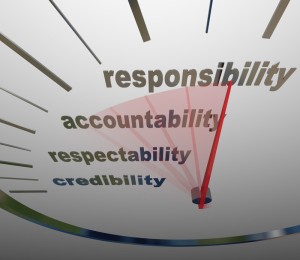
Example is not the main thing in influencing others. It is the only thing. – Albert Schweitzer
A story is told of when Gen. George C. Marshall took command of the Infantry School at Fort Benning, GA. He found the post in a generally run-down condition. Rather than issue orders for specific improvements, he simply got out his own paintbrushes, lawn equipment, etc., and went to work on his personal quarters. The other officers and men, first on his block, then throughout the post, did the same thing, and Fort Benning was brightened up.
While no one would argue that leadership by example is the best way to lead, unfortunately, we have plenty of leaders who do not. I know the frustration of working with such leaders and the challenges associated with it. It can make life miserable.
Regardless of where your leadership role places you in your organizational structure there are lessons to be learned from bad examples. An article in Inc. magazine (http://on.inc.com/1p5c4Bj) highlighted some common bad boss behaviors. Here are a few of the findings from the Harris poll: My boss doesn’t talk about my life outside of work, my boss won’t talk on the phone (or in person), my boss doesn’t know my name, my boss takes credit for other’s ideas, and they don’t give clear directions.
Can you identify with any of the cited behaviors? What would you add to the list? Regardless, here is a hard truth I learned some time ago- either change your attitude or change your address. I know that can be a tough pill to swallow especially if you feel trapped without a good viable option. It can be demoralizing. So what is a leader like you to do when your leader sets a good bad example?
Be the example your leader is not
Instead of wasting time focusing on everything that is wrong with the leader in your organization that sets a bad example, make it your priority to do what is right. You are only responsible for your actions, attitudes, and behaviors. What expectations do you have for the leader(s) in your organization? Model it. The best leader is the one who knows how to lead himself.
Be part of the solution
The path of least resistance in your organization is to sing along with the chorus of complainers. It requires little. But if you are going to emerge as a leader worthy of respect then take the high road and be part of the solution. It’s easy to find fault. A leader will seek to find solutions. In the end, your leader who is a bad example may continue to be a bad example, but at least you will have a clear conscience that you did the right thing.
Be understanding of their plight
Leadership is hard. John Maxwell was right when he observed, “It’s lonely at the top so you better know why you are there.” Sometimes we judge the actions and/or behaviors of leaders in our organizations with limited information. Do we really know the whole story or are we simply listening to the latest gossip going around the office? With hard work and determination one day it very well could be you in that position so be careful to not let bad karma come back and bite you. Be understanding and reserve judgment. Your leader is human just like you and you may not know the personal struggles that he or she is going through.
Be intentional about your growth
As a developing leader it is important to be intentional about your growth. From bad leaders in my past I’ve learned valuable lessons that served me well later in life. Uppermost I learned how not to treat people. Your time around a good bad example may not serve any other purpose than that, but learn it. Be observant. Take notice of the good bad examples and their leadership styles and the effects it has on the organization. We’d all rather be around good leaders who set good examples. But even a bad example can teach you leadership skills. Pay attention.
Brian Tracy said, “Become the kind of leader that people would follow voluntarily; even if you had no title or position.” That is a goal worthy of emulating. Be the leader people want to follow; not the one they have to follow. Be a good example.
© 2016 Doug Dickerson








